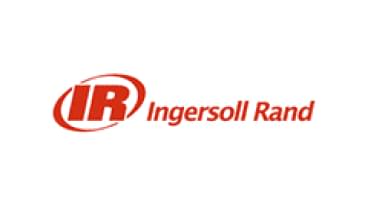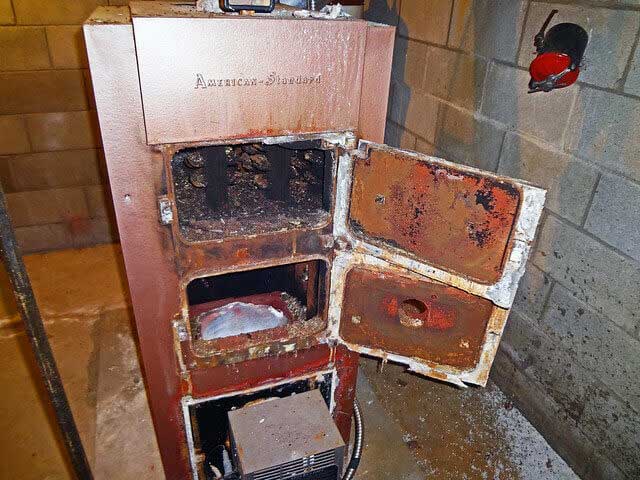Ingersoll Rand
Ingersoll Rand and a company it acquired, Trane, used asbestos to make pumps, compressors and other products. The company continues to handle asbestos lawsuits through the courts and settlements.

Ingersoll Rand’s History with Asbestos
Ingersoll Rand is one of the leaders in global manufacturing of industrial equipment, including mining and drilling machinery, power tools and manual and electric chain hoists.
Simon Ingersoll founded its predecessor, Ingersoll Rock Drill Company, in 1871. The company later took the name Ingersoll-Sergeant Drill Company before it merged with Rand Drill Company in 1905, resulting in the company known today as Ingersoll Rand.
In 2008, Ingersoll Rand acquired an HVAC supplier known as Trane and absorbed it into its Climate Control Technologies division. Trane was formerly known as American Standard Companies Inc. and used asbestos in many of its HVAC components.

At the time of the acquisition, Trane was reported to have 105,023 open asbestos claims. Prior to the 1980s, certain products Ingersoll Rand used during production, such as gaskets, valve packing and compressors, were made with asbestos because it added heat protection and strength.
Unlike other asbestos manufacturers, Ingersoll Rand has yet to file for bankruptcy and establish a trust fund to handle claims. The company continues to litigate asbestos lawsuits through settlements and the court system.
In March 2020, Ingersoll Rand completed a merger with Gardner Denver, an industrial manufacturer of compressors, blowers and vacuum pumps, and kept the Ingersoll name.
Today, Ingersoll Rand offers services and products for numerous industries, including aerospace, chemical, energy, manufacturing, mining, oil and gas, pharmaceutics and transportation.

Gain access to trust funds, grants and other forms of compensation for you or your loved ones.
Get Help NowAsbestos Litigation Involving Ingersoll Rand
Ingersoll Rand has been involved in ongoing asbestos litigation and continues to face lawsuits in both federal and state courts. The lawsuits are predominantly associated with the company’s production of pumps, compressors, boilers and railroad brake shoes, which incorporated asbestos gaskets and other asbestos-containing products.
As of early 2008, Ingersoll Rand had settled more than 208,000 asbestos claims, with payouts totaling more than $308 million. The company was facing more than 100,000 pending claims that year, and it expected to pay up to $755 million for pending and future asbestos claims by 2053.
As of June 30, 2019, more than 80% of asbestos claims against the company were non-malignant or unspecified disease claims, many of which remain on inactive or deferral dockets. Ingersoll Rand says these claims have little to no settlement value.
In December 2019, the company had a reserve of $118.1 million to pay for the costs of asbestos litigation, and says its insurance policies are set to cover its asbestos liabilities.
- In 2019, a Pennsylvania appellate panel ruled a deceased mesothelioma plaintiff’s deposition should not have been tossed out by a state court judge in an asbestos lawsuit filed against Ingersoll Rand. Nicolas Kardos worked at Baltimore and Ohio Railroad and Gulf Research, where he was exposed to asbestos products and subsequently developed mesothelioma. The plaintiff’s family will be allowed to submit the deposition in a retrial.
- A Florida jury awarded nearly $1 million to the estate of Woodrow McBride, a power plant worker who developed mesothelioma after long durations of asbestos exposure through products manufactured by Ingersoll Rand and several other companies. He filed the lawsuit in August 2006, just one month before he died, and the jury reached a verdict in 2009.
Ingersoll Rand’s Asbestos Products
Asbestos-containing products used by Ingersoll Rand or made by Trane included:
- Boilers
- Braided asbestos
- Compressors
- Gaskets
- HVAC components
- Pumps
- Railroad brake shoes
- Sheet packing
- Steam pump packing
- Valve packing
Ingersoll Rand’s Occupations at Risk
The following occupations were at risk of exposure to asbestos products made by Ingersoll Rand:
- Trane and Ingersoll Rand manufacturing plant workers
- Boiler workers
- Power plant workers
- Shipyard workers
- Railroad workers
- Industrial workers
- Factory workers
- Manufacturing plant workers
- Maintenance workers
- Engineers
- Veterans of the U.S. armed forces
Ingersoll Rand’s asbestos-containing products were used for a variety of purposes and resulted in a range of occupations at risk of asbestos exposure.
According to a 2022 report by the European Commission, over 70,000 workers died in 2019 from past exposure to asbestos. Employees were under additional risk if they worked in environments where asbestos was present in workstation fixtures and protective clothing.



